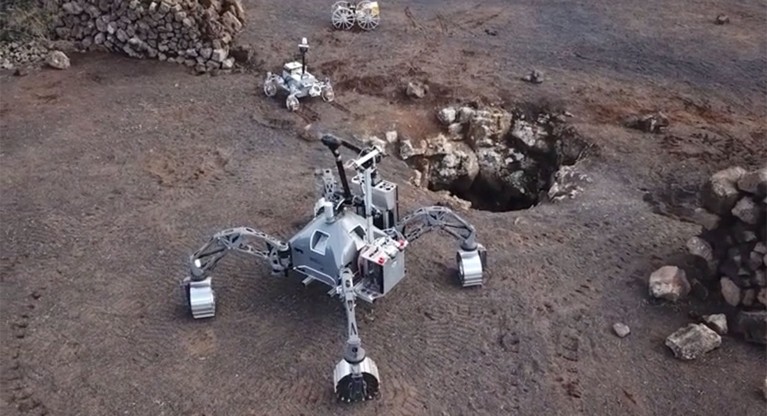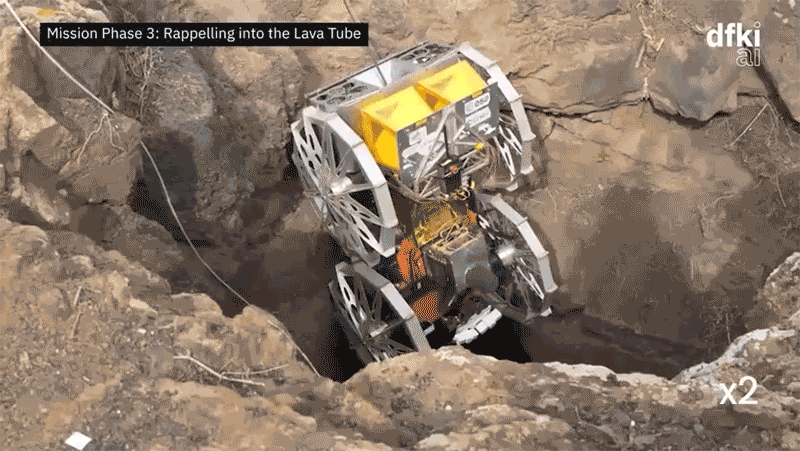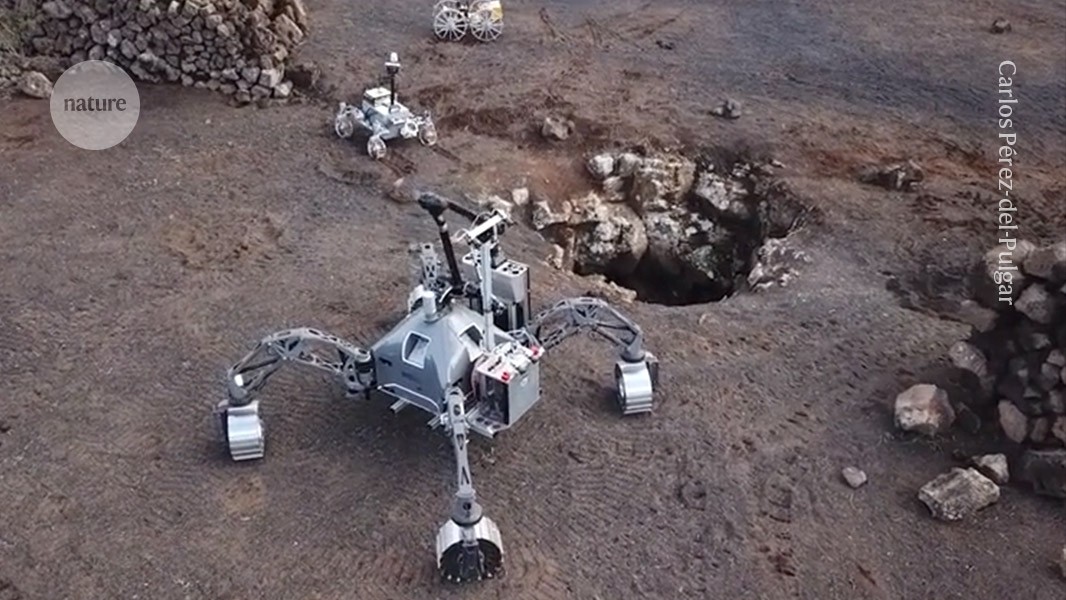
The three robots worked as a team to enter and map an underground tunnel.Credit: Carlos Pérez-del-Pulgar
To explore volcanic tunnels on the Moon or Mars, send a team of specialized robots.
Researchers have demonstrated this approach in tests on Lanzarote, an island in Spain, with one rover helping another to rappel down a vertical shaft into a subterranean cave.
Testing the concept for such complex underground exploration in realistic field conditions was “a significant step toward enabling future lunar or Martian cave missions”, says Jennifer Blank, a geochemist at the Blue Marble Space Institute of Science in Moffett Field, California, who has worked on NASA’s Curiosity rover. The experiments were described today in Science Robotics1.

The smaller rover stays attached to the larger one as it rappels down into the lava tube. Credit: Carlos Pérez-del-Pulgar
Volcanic eruptions often leave behind underground tunnels called ‘lava tubes’. These form when rivers of hot lava flow underneath a surface layer that has cooled and solidified, creating channels that are left empty once the eruption stops.
Satellite surveys have uncovered lava tubes beneath the surfaces of Mars and the Moon. These underground environments could be the ideal places to build outposts in future missions, because they would keep people safe from cosmic rays, solar storms and micrometeorites. “It could be a very good place to find life signatures, and also to place a human habitat,” says Carlos Pérez-del-Pulgar, a roboticist at the University of Malaga in Spain.
Intrepid robots
Pérez-del-Pulgar and his collaborators devised a strategy to test their robots’ ability to explore a lava cave in Lanzarote in four phases. First, two rovers mapped the surface around the entrance to the underground cave. A small, cubical probe similar to a ‘cubesat’ was then ejected from one of the rovers and dropped down into the cave to produce a detailed 3D map of the entrance. The rovers used that to plan the best route for a descent.


